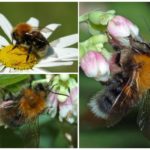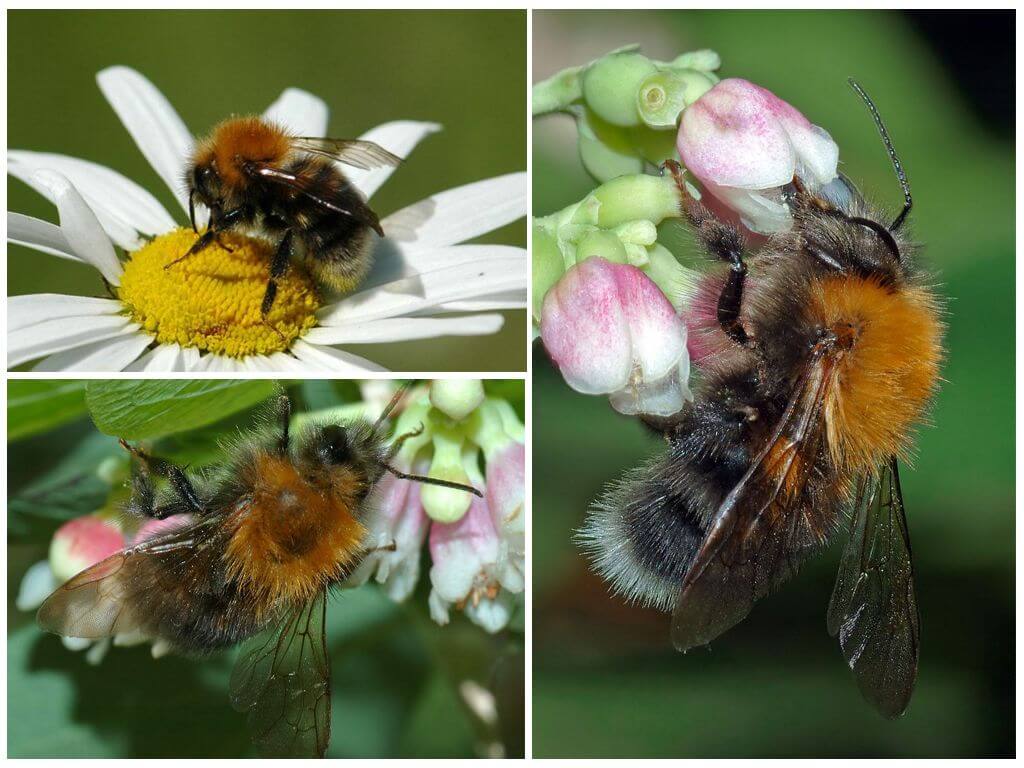Description and photo of the city bumblebee
- City Bumblebee
- City Bumblebee
The city bumblebee is a arthropod insect, whose name is derived from the wheezing and humming sounds that make them fly. Back in ancient times, the beautiful flower pollinator was referred to as "Chmmel," over time, the shaggy flyer was paraphrased in the usual for us "bumblebee". What features the insect has, what it feeds on and where it lives, the answers to these and other questions can be found in this article.
Description
The city bumblebee is a brightly colored insect with red hairs on its back. The length of his body varies from 9 to 22 mm.Moreover, females are much larger than male individuals. The smallest sizes differ working individuals (from 9 to 5 mm).
Interesting!
But, despite the small size, representatives of this type of flower pollinators are able to lift a load identical to their own weight.
On a shaggy, oval-shaped body there is a pair of small transparent wings consisting of two synchronously moving halves and 3 pairs of limbs. Moreover, the hind legs are equipped with a special basket designed to collect pollen mass. On the elongated head are the eyes uncovered by villus, a pair of antennae, and powerful jaws, with which the city bumblebee easily breaks through plant fibers.
To collect nectar, the city bumblebee uses a special proboscis, the length of which can reach 7-19 mm. Owners of a smooth sting are exclusively females, using the instrument of protection repeatedly. In males, the genitalia are located at the sting site.
Nutrition
City bumblebees collect pollen and nectar from various plants. Food for the larvae is not only fresh nectar, but also made by adults. honey.
On a note!
Honey city bumblebee has a liquid consistency and a lighter color compared to the bee. In addition, it is less sweet and fragrant.
Habitat
You can meet a city bumblebee almost everywhere, from Western Europe to the Far East. Representatives of this species also live in China and Taiwan. Usually an insect nests in hollows, birdhouses or various wooden buildings, because of what it is also called as a hollow bumblebee.
This representative of the bee family is one of the most cold-resistant. Dislike for tropical conditions is explained by the peculiarities of insect thermoregulation.
Interesting!
Temperature indicators of the body of a bumblebee can reach 40 degrees, which is explained by the rapid contraction of its pectoral muscles. This is what causes the formation of humming sounds.
Breeding process and longevity
The insect breeding process includes 4 stages: egg, larva, pupa and imago. With the advent of heat, the female fertilized in autumn begins to actively build a nest. There she lays about 1.5 dozen eggs, of which after 3-6 days larvae are born.For some time, the mother takes care of the young offspring, providing them with the necessary food.
Two weeks later, the larvae begin to pupate, which takes them from 10 to 18 days. After that young bumblebees are born, the life expectancy of which depends on the place occupied in the bumblebee. So working individuals live no more than 15 days, males - 2 times more, dying almost immediately after fertilization. Long-livers are females, whose life expectancy can be about a year.









